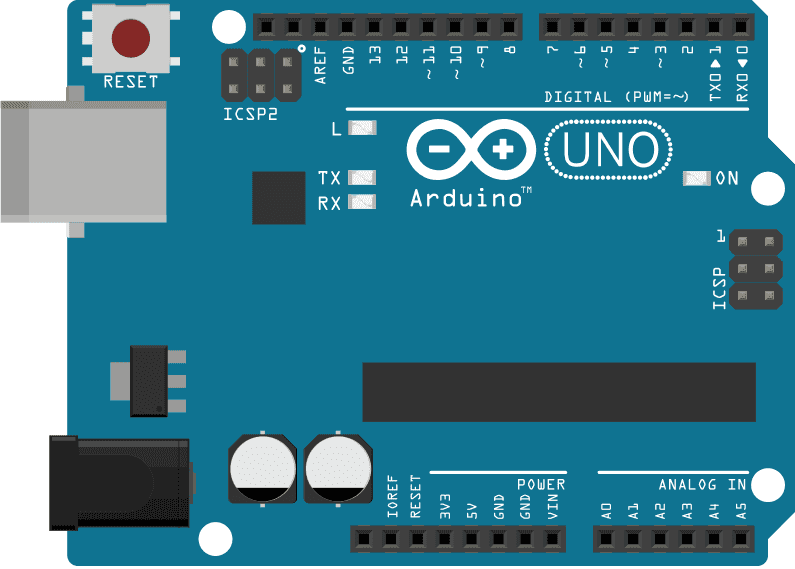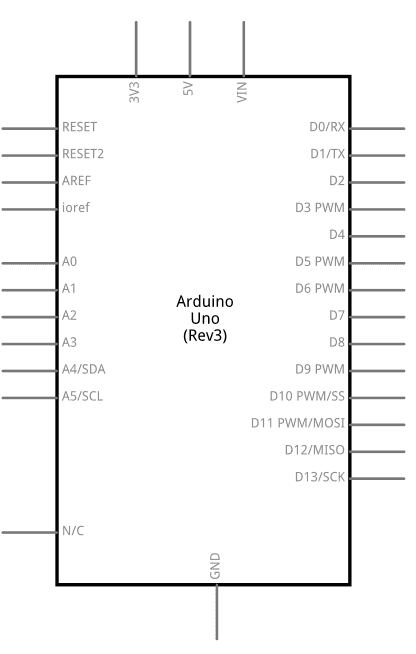EEPROM Update
The microcontroller on the Arduino boards have 512 bytes of EEPROM: memory whose values are kept when the board is turned off (like a tiny hard drive).
The purpose of this example is to show the EEPROM.update() method that writes data only if it is different from the previous content of the locations to be written. This solution may save execution time because every write operation takes 3.3 ms; the EEPROM has also a limit of 100,000 write cycles per single location, therefore avoiding rewriting the same value in any location will increase the EEPROM overall life.
Hardware Required
- Arduino Board
Circuit
There is no circuit for this example.

image developed using Fritzing. For more circuit examples, see the Fritzing project page
Schematics

image developed using Fritzing. For more circuit examples, see the Fritzing project page
Code
/***
EEPROM Update method
Stores values read from analog input 0 into the EEPROM.
These values will stay in the EEPROM when the board is
turned off and may be retrieved later by another sketch.
If a value has not changed in the EEPROM, it is not overwritten
which would reduce the life span of the EEPROM unnecessarily.
Released using MIT licence.
***/
#include <EEPROM.h>
/** the current address in the EEPROM (i.e. which byte we're going to write to next) **/
int address = 0;
void setup() {
/** EMpty setup **/
}
void loop() {
/***
need to divide by 4 because analog inputs range from
0 to 1023 and each byte of the EEPROM can only hold a
value from 0 to 255.
***/
int val = analogRead(0) / 4;
/***
Update the particular EEPROM cell.
these values will remain there when the board is
turned off.
***/
EEPROM.update(address, val);
/***
The function EEPROM.update(address, val) is equivalent to the following:
if( EEPROM.read(address) != val ){
EEPROM.write(address, val);
}
***/
/***
Advance to the next address, when at the end restart at the beginning.
Larger AVR processors have larger EEPROM sizes, E.g:
- Arduno Duemilanove: 512b EEPROM storage.
- Arduino Uno: 1kb EEPROM storage.
- Arduino Mega: 4kb EEPROM storage.
Rather than hard-coding the length, you should use the pre-provided length function.
This will make your code portable to all AVR processors.
***/
address = address + 1;
if (address == EEPROM.length()) {
address = 0;
}
/***
As the EEPROM sizes are powers of two, wrapping (preventing overflow) of an
EEPROM address is also doable by a bitwise and of the length - 1.
++address &= EEPROM.length() - 1;
***/
delay(100);
}See also
EEPROM Clear - Fills the content of the EEPROM memory with "0".
EEPROM Read - Reads values stored into EEPROM and prints them on Serial.
EEPROM Write - Stores values read from A0 into EEPROM.
EEPROM Crc - Calculates the CRC of EEPROM contents as if it was an array.
EEPROM Iteration - Programming examples on how to go through the EEPROM memory locations.
EEPROM Put - Put values in EEPROM using variable semantics (differs from EEPROM.write() ).
EEPROM Get - Get values from EEPROM and prints as float on serial.
Last revision 2018/05/17 by SM